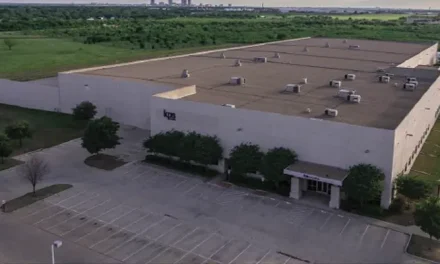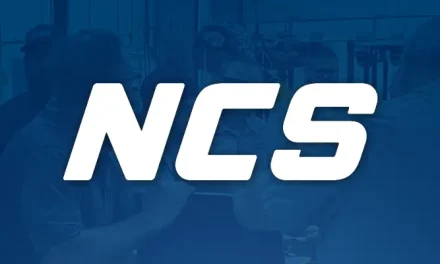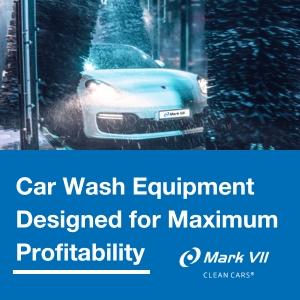
The Benefits of Using Flexible Piping in Vent-Pipe Applications

By Ed Kammerer
It is impossible to predict how far-reaching the ramifications of an event as unique and unprecedented as the COVID-19 global pandemic will be. The same can also be said for the historically harsh winter storm in February that shut down, or at least interrupted, operations in much of the United States’ main chemical-producing region of Texas and Louisiana.
Now, 18 months after COVID-19 arrived and five months since Winter Storm Uri wreaked its havoc, we can come to this conclusion: North America is experiencing a shortage of fiber-reinforced polymer (FRP), or fiberglass. This shortage is hampering efforts to produce, in a timely and cost-effective manner, hundreds of products that count fiberglass among its components.
For the owners and operators of retail-fueling sites, the fiberglass shortage has made it difficult to acquire vent pipe for use in underground storage tank (UST) installations, which can hold up installation of new or upgraded systems. Vent pipe is a critical component in the fueling setup as it is run from the UST to the system’s pressure vacuum vent, which allows the tank to vent should its internal pressure exceed a certain point, and protects the vent pipe against intrusion and blockages caused by water, debris or insects.
While the fiberglass shortage is concerning, fortunately for fuel-site operators, there is a readily available – and proven – solution for the problem: flexible vent pipe.
Why Flex Pipe?
Flexible pipe has been a mainstay in forecourt fuel-system installations for more than 25 years, mainly to provide connection points between USTs and fuel dispensers. In addition, in 2004, UL/ULc added a “normal vent pipe” designation to its UL-971 “Standard for Safety Nonmetallic Underground Piping for Flammable Liquids,” making flex pipe a useable option in fueling-system installations for both liquid product and vent applications.
The advantages that flex pipe have in fuel-delivery applications are the same as when it is used as vent pipe:
- Eliminates the need to hand-build joints in the field
- No cutting, fitting and welding of underground fittings
- Termination points can be contained safely inside sumps; no need to bury joints underground
- Reduction in or elimination of potential leak points
- No need to use adhesives or temperamental glue kits to connect pipe to fittings
- Can be installed in any type of weather conditions
The use of flex pipe also has specific benefits when compared to other materials of construction that can be used in vent pipe:
Fiberglass Pipe: In addition to its current shortage that is adversely affecting cost and delivery lead times, rigid fiberglass piping can be challenging to work with, especially when weather conditions are less than perfect. Specifically, fiberglass piping, which requires specialized glue kits and equipment to install, is hard to connect in colder conditions, creating a catch-22 situation for the installation team. And even if the fiberglass piping can be glued together, the joints need time to cure properly, which lengthens the installation period. Flex pipe, on the other hand, can be installed in any type of weather, which is a huge advantage when you’re talking about the oftentimes extreme climate in Canada. Also, since you’re literally installing glass in the ground, ground shifts, including frost heave or changes in weather conditions, can cause the fiberglass piping to crack, which can lead to water intrusion into the UST, a concern mitigated by flex pipe.
Semi-Rigid Pipe: This type of pipe needs to be welded with joints that are buried in the ground, which can be a costly and time-consuming process. Also, when a fused joint is mechanically connected to a sump wall, the force required to attach it can result in the creation of fine cracks in the sump, which can lead to the creation of potential leak points. Since flex pipe does not need to be welded, it has a wider forgiveness window than semi-rigid pipe, meaning less chance that force-related leak or water-intrusion paths will develop.
Flexing Your Muscles
OPW Retail Fueling, Smithfield, NC, set a new standard in the capabilities of flexible piping when it introduced its FlexWorks line of products in 1996. Since then, more than 10 million feet of flexible piping – which achieved a UL listing for use as vent pipe in 2007– has been sold for use with motor fuels, high-blend fuels, concentrated fuels, and aviation and marine fuels in the United States and Canada.
Available in both single-wall and double-wall configurations, OPW flex pipe can be purchased in multiple lengths on a reel or in 25-, 33- and 40-foot flat “sticks” and in diameters of 1.5, two and three inches. The flat-stick configuration aids the fuel-site installer because the piping must be perfectly straight with no dips or low spots when it is installed – using “straighter is greater” as a guide – according to PEI/RP 100-20 “Recommended Practices for Installation of Underground Liquid Storage Systems.” Specifically, Section 10.12 of PEI/RP 100-20 states, “Slope vent piping no less than 1/8-inch per foot back to the tank. Carefully grade the bedding for the vent piping to avoid sags in the line where liquid could collect.” OPW goes further than the PEI/RP 100-20 recommendations and suggests that the vent piping be sloped 1/4-inch per foot back to the tank.
It is also suggested that the flexible vent-pipe connections be constructed of stainless steel and contained in a transition chamber or sump, especially in states that require the use of double-wall pipe. If stainless-steel fittings or a transition sump are not available, the connections should be wrapped in Densyl tape (also known as grease tape or wax tape) as a way to protect against corrosion.
In the 25 years since its creation, OPW has made some upgrades to its FlexWorks flexible piping, including increased flexibility that requires less force to bend for easier installation; reduced pipe weight for lower shipping/handling costs; significantly reduced pipe memory that facilitates quicker connections and creates the ability to lay the pipe flat with no dips in the trench; and the use of an enhanced Kynar ADX (PVDF) pipe liner that is denser and more permeation-resistant.
A final advantage to using OPW flex pipe in vent-pipe installations is that in addition to the pipe itself, OPW is also a manufacturer of the extractor fittings, containment sumps/chambers and pressure vacuum vents that encompass the vent-pipe system. This gives the fuel-site operator a one-stop source for all of the components, which reduces the time and cost required to purchase and install the system.
Conclusion
Trying to predict how events such as global pandemics and severe storms will affect commerce is a fool’s game. But when the outcome becomes known, those who react best to changing conditions will have an advantage. So, it is with the global shortage of fiberglass, which has slowed or even halted many manufacturing and construction processes. In the world of retail fueling, however, a ready-made replacement is available to fill the void: flexible piping. After decades of success in outfitting underground fuel-delivery systems, flex pipe has become a first choice for vent-pipe applications for retailers, and the current fiberglass vent-pipe crunch is just another notable reason that can make it a better alternative than rigid or semi-rigid fiberglass pipe.
Ed Kammerer is the director of global product management for OPW, based in Cincinnati, OH, USA. He can be reached at ed.kammerer@opwglobal.com. For more information on OPW, go to www.OPWGlobal.com.



































